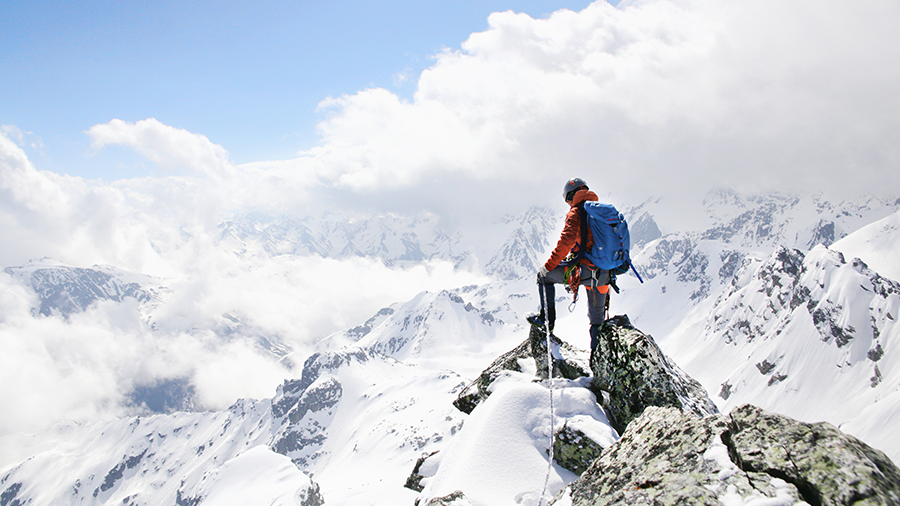Developmental psychologists have noted that personal growth occurs in successive stages. New perspectives open as one stage transcends the limitations of its predecessor. I call these stages plateaus – and link them to the heroic effort to climb the five mountains of personal development.
The five mountains are the developmental aspects that I introduced with SEALFIT’s integrated training back in 2007. They are the physical, mental, emotional, intuitional, and spiritual practices that integrate and accelerate human development. The challenge is that the hero is likely to get lost between plateaus, or exhaust their tool kit and become stuck, feeling incompetent, even unworthy of continuing the journey. Worse, they are often unaware of being stuck, so they settle in at the status quo. While they may act content, they are actually unhappy and often continue destructive tendencies.
Getting stuck can feel awful. You know there is more that you can be and do, but you muck around in the mud pit of personal disasters and frustrations. You’re entrenched in worn-down biased ruts and negative conditioned thinking. Yet, taking an objective, sober look at our personal developmental map can inspire action. We see that there is a path to extract ourselves from the pit and trek to the peaks of potential.
Being aware of the plateaus, and where we stand on the journey, can be a powerful tool to unlock growth. A key is to integrate missing aspects of earlier plateaus we’ve already traveled to accelerate development to the most complete stage possible. This self-awareness betrays the complexity of leadership. Not only do we need to deal with the exponential change around us, but the internal reality maps that you and your team take for granted are of different mountain ranges!
Most leaders are not aware of this uncomfortable truth, and if they are aware, they pass it off as an interesting theory. Failing to recognize the different terrains they and their teammates are in, they get stuck in the ditch and miss the trail markers pointing the way up the mountain. It takes great self-awareness to activate and actualize personal transformation.
The five plateaus can be considered as distinct frames of reference for a world view, replete with verifiable beliefs, positions and reactions. Each represents a valid world view, but they become more expansive and inclusive as one ascends toward the highest plateau and beyond. Here is a brief description of the qualities of each plateau:
- First Plateau: The Survivor. This is a very raw, physical, and instinctual stage of development. Survival and lower order Maslovian needs are the sole focus for the individual or culture. About fifteen percent or so of the global population is here.
- Second Plateau: The Protector. Here one’s basic survival needs are met, and concern extends from the self to one’s tribe or identity group. Energy is focused on protecting the position, wealth and viewpoints of that group. Bureaucratic and nationalistic thinking are dominant. About thirty percent of the global population is here.
- Third Plateau: The Achiever. Moving beyond the group, ambition and drive for success compel the expert and achiever to put points on the board and add to the resume, bank account and list of accomplishments. Climbing the organizational ladder or entrepreneurial thinking are dominant. About thirty percent of the population is here.
- Fourth Plateau: The Equalizer. Here, greed and power cede control to justice, equality and service. Ethnocentrism can still hold sway, but a movement toward a world-centric view has taken root. Social entrepreneurship, cause campaigns and global NGOs dominate here. About twenty percent of the global population is here.
- Fifth Plateau: The Integrator. This is a fully world-centric point of view which transcends and includes the most positive aspects of the first four plateaus. Leadership here is compassionate, inclusive and sustainable. This is the aspiration for growth-compelled individuals on the hero’s journey. About five percent of the global population is here.
An individual’s shadow will show up differently in each plateau and can negatively impact a leader’s development. As alluded to above, the plateaus are not fixed, but one can move between plateaus based upon life situations and how they react to other’s views.
For instance, a leader can be at the achiever plateau at work, but react with a subconscious projection when triggered by their mom, taking them temporarily to the protector plateau. Or, as the result of a pandemic or war, one could get triggered into the survivor plateau as the world falls apart around them. The good news is that through the work of integration (i.e. growth), leaders can surface and eradicate negative shadow elements that keep them stuck or triggered. With integration training, one can rapidly ascend to the fifth plateau. And, as Zig Ziggler liked to say: “There is a lot of room at the top!”
That’s all for now. In my next post, I’ll dive deeper into the shadow issues that can stunt growth in each of the five plateaus. Which plateau do you currently find yourself in?


